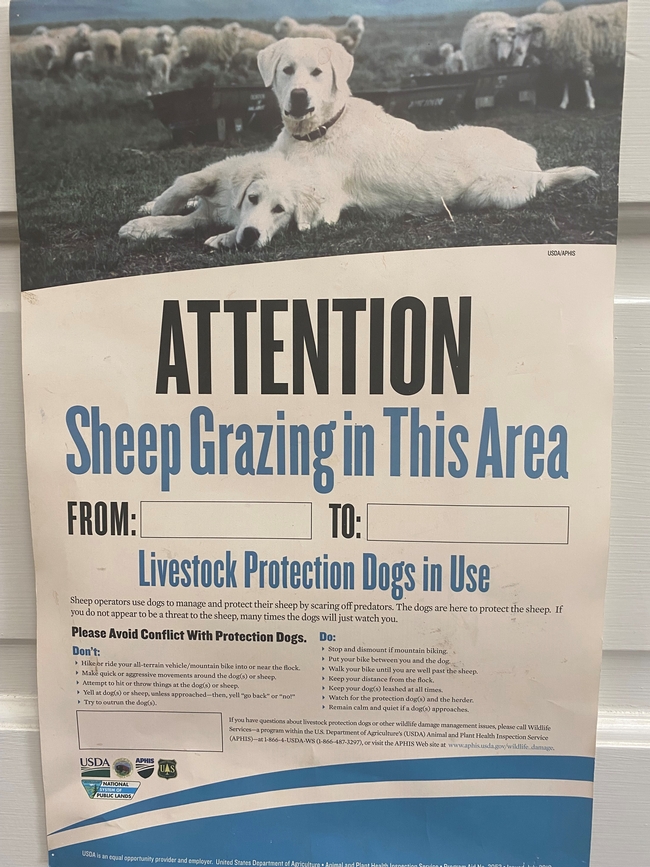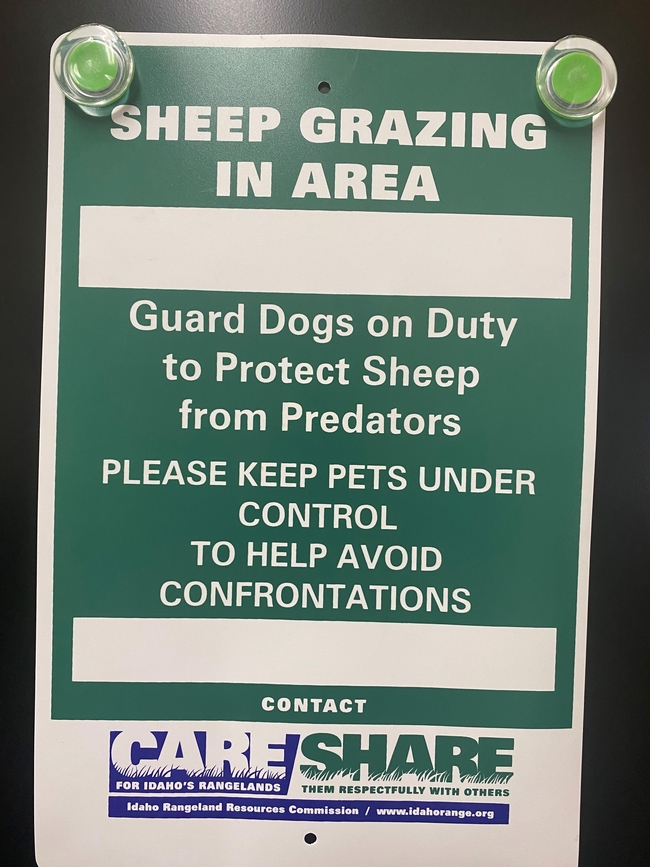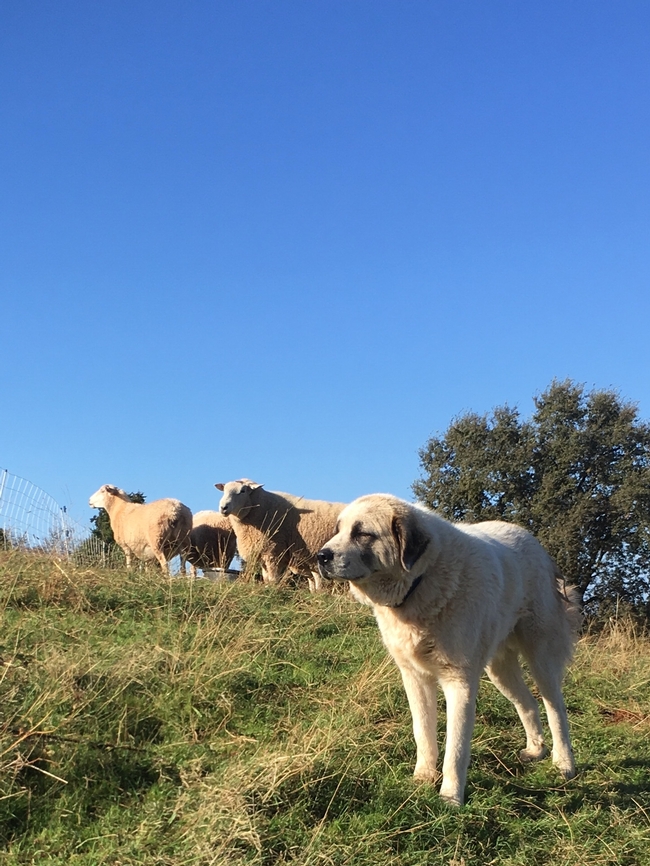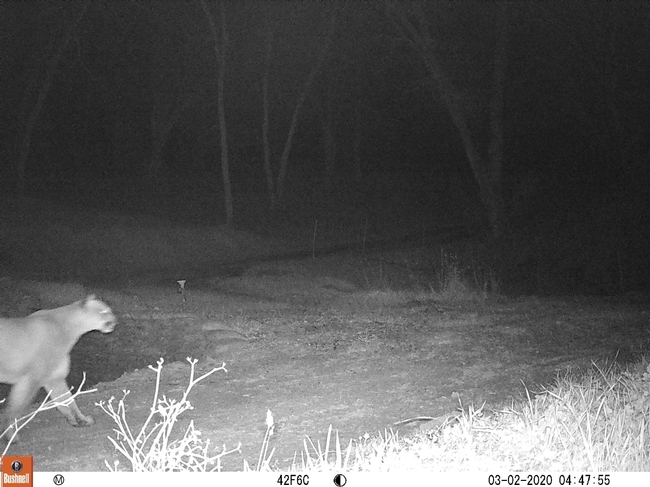I suspect anyone who has used livestock guardian dogs (LGDs) to protect livestock has experienced at least one of the following interactions with non-ranchers:
- A call or conversation with a neighbor, complaining about the dog barking;
- An email (often anonymous) from a neighbor about the dog barking;
- A visit from animal control about (a) the dog barking, (b) the fact that the dog is outside ALL OF THE TIME, or (c) all of the above;
- A call from animal control that a well-meaning person "found" a stray big white dog and brought it into the animal shelter.
And the list probably goes on!
These complaints, in my experience, reflect a number of misconceptions. Most people think of dogs as pets, and expect that working LGDs should be treated as such (which apparently means letting them sleep inside). A surprising number of people here in the foothills have never seen any of our local predators (especially mountain lions) and so have no idea of the threat these predators pose to livestock. And virtually nobody who doesn't use a dog to protect livestock understands the types of behaviors that make for an effective LGD.
Nine summers ago, I received an anonymous email from a neighbor complaining about our LGD awakening him at 5 a.m. and suggesting that we use a bark collar on him. While my initial inclination was to respond immediately (and angrily), my wife urged me to sleep on my response (and, as usual, she was right about this!). Here's how I ultimately responded:
Sorry to hear that our dogs have inconvenienced you. As you may not know, we are in the commercial sheep business. All of our dogs are an essential part of our business - either as herding dogs or as livestock guardian dogs (LGDs). While most of our operation exists on leased land around Auburn, we do keep some sheep and goats at our home place. These are generally animals that require special care - orphaned lambs that must be bottle-fed 2-3 times daily, older sheep and goats that require special care and feeding, and an occasional injured or sick animal. Our property is zoned "Farm" by Placer County, which permits these commercial activities.
Sheep and goats are vulnerable to predators like coyotes, mountain lions and domestic dogs - even in a neighborhood like ours. Indeed, the only animals we've ever lost to predators were killed by a neighbor dog two years ago in our back pasture. At that time, we did not have any LGDs with the sheep. The neighbor dog was observed chasing sheep into the irrigation ditch and killing them for sport - we lost 4 ewes in the attack. Since that time, we've tried to make sure that we are always protecting our animals (and our livelihood). Our LGDs are critical to this effort.
LGDs instinctively respond to anything they perceive as a threat to the animals they are guarding. The best LGDs are raised with the animals they spend their lives guarding - our dogs have been with sheep from the moment they were whelped. Their first response to a perceived threat is to bark. If the threat persists, an LGD will aggressively challenge the threat. Sometimes the threat is readily apparent to us humans; other times it is not. We have experienced our dogs barking at the scent or sound of a coyote, which we only discovered later. We've also noticed that our LGDs can learn about routine - for example, they don't bark at folks who walk their dogs past our place at the same time everyday. Since barking is part of their guarding behavior, discouraging an LGD from barking will ruin the dog's effectiveness.
When we have LGDs at our home place, we are especially aware of their barking - both because it represents a potential threat to our livestock and because we want to be good neighbors. When a dog sounds a warning bark (and we've found that LGDs only bark when they are trying to warn off a perceived threat), we'll check it out - even in the middle of the night. Most of the time, our dogs relax and stop barking once we've responded to their warning barks.
I would like to invite you to visit our operation at some point. The partnership that we've developed over many years with both our herding dogs and our LGDs represents an amazing relationship between humans and dogs. We could not operate a commercial sheep business without this partnership, and watching our dogs work - even for us - is a wonderful experience. Also, we'd be glad to forward you additional information regarding LGD behavior and training.
Several days later, I received this response:
Thank you for your reply and detailed information regarding your business. We wish you the best success for your business! Someday my wife and I will come by and see your farm.
Thanks again for understanding and making great efforts in keeping the barking to a minimum as much as possible. We too have a dog, so we do understand.
While I still don't know who this neighbor was (and they still haven't visited our operation), we haven't had any further problems at our home place.


I'm often asked if there are particular LGD breeds that are less likely to bark. In my experience, barking varies more by individual than by breed - all LGD breeds are inclined to bark as a first line of protection. Our older dogs, typically, bark less - I suspect that experience often equals better judgment about what is a threat (and what isn't). When we're working in an area where neighbors are particularly sensitive to barking, we'll try to use an older dog if possible.
Finally, we've discovered that trail cameras can help us educate neighbors (and the public) about the predators in our environment. Last year, we photographed a mountain lion on a well-used community trail about 30 yards from where our ewes were lambing. Nobody in this neighborhood had seen a lion before; suddenly, they were happy to have an alert (and barking) dog nearby!
LGDs are not appropriate in every situation. While they may keep raccoons out of a suburban backyard chicken coop or away from pet pygmy goats, there are generally better options for protecting livestock in suburban settings. As a farm advisor, most of the calls I've received in the last 4-plus years have been about LGDs in these kinds of settings. Predator-proof fencing, night penning, and FoxLights are usually effective in these situations - and less annoying to the neighbors. But in a commercial setting, LGDs may be the best option for protecting livestock - explaining how and why these dogs work is an important part of using them effectively.

